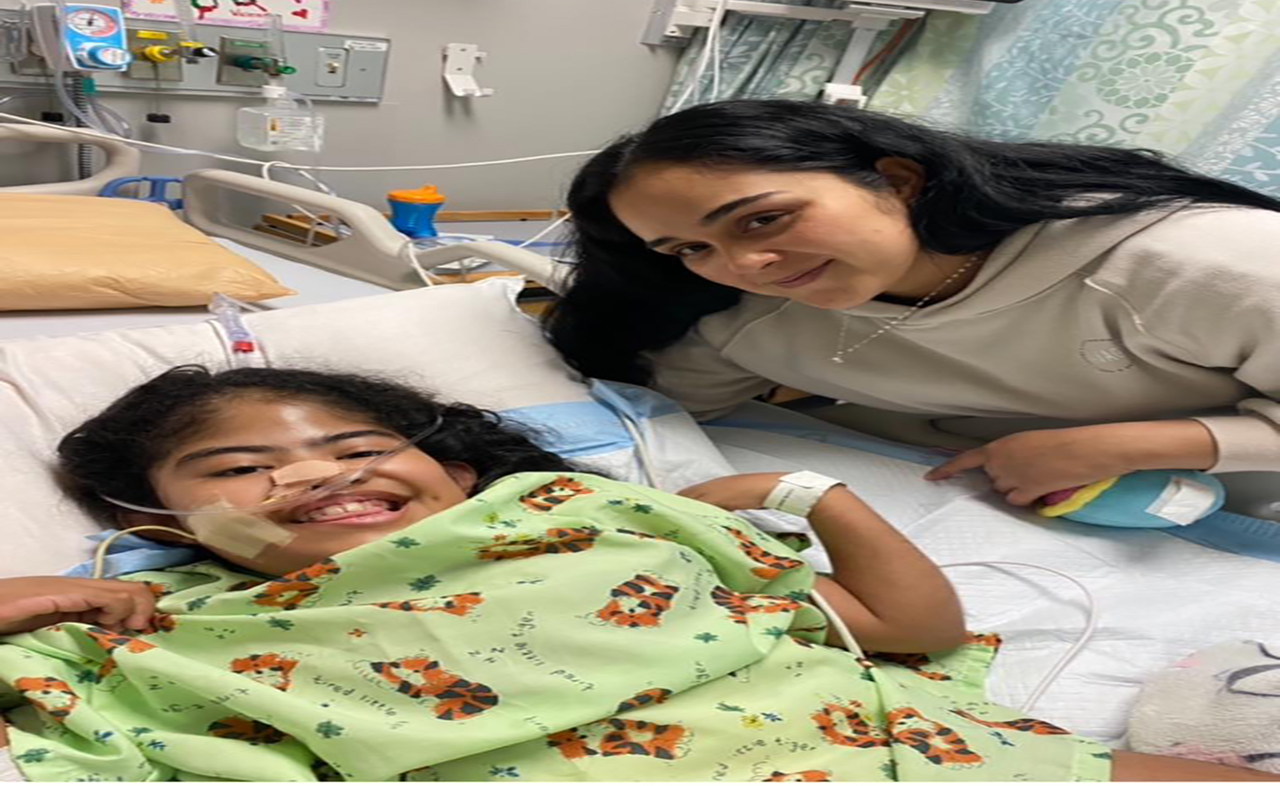
Women at the Top
Overcoming all odds, Latinas are progressing almost twice as fast as their male counterparts in their community. AL DÍA News will honor them.
Breaking the ice was not a difficult task. The conversation flowed effortlessly. It must have been the natural chemistry that occurs between people who recognize themselves as peers; women with features and accents that show a common origin and whose life histories are easily woven with a single thread.
The rendezvous was at AL DÍA’s roundtable. The purpose was to talk about the meaning of being women, Latina and successful in Philadelphia, or in the United States, or - in short - in a world that maintains a red balance in perhaps all the subjects susceptible of being impacted by gender inequality.
And they took it seriously (could not be otherwise): the six women that AL DÍA News will recognize next Wednesday April 12 with the Women at the Top Award - for their role as leaders in their fields of profession - know that recognition is little compared to the responsibility they have with hundreds of young Latinas who need to know their stories almost urgently and convince themselves that no matter how many difficulties there might be, they will not be impossible to overcome.
María Vizcarrondo, the oldest in the group, knows a lot about this. With more than 35 years of experience in administrative positions, this multilingual sociologist - director of the Nerney Institute of Leadership at Cabrini University – doesn’t forget where everything began: her home, in a Latino neighborhood in New York. There, her mother and grandmother taught her the courage to persevere and to be transparent.
Vizcarrondo, who has been the first and only Latina in every workplace she has ever stepped in, also knows what it costs to earn a place in the honor roll: “I always had to work almost triple than what a man had to just to make sure others were clear about my abilities. If I had hidden in a corner and asked to be given a chance just for being a woman, I think it wouldn’t have worked.”
In a country like the United States, where gaps between men and women are still deep, self-pity does not serve as a bridge to move towards equity. That is transparent-clear to Miriam Enríquez, a seasoned lawyer in the courtrooms and director of the Office of Migratory Affairs of Philadelphia. "I think we should start by recognizing that it doesn’t matter that we are women or that we are Latinas. What is important is that we must have the necessary competencies to perform a certain job."
Perhaps Enríquez is right. Although there are certain people who think that it is necessary to have a little luck before having the opportunity to demonstrate abilities, their opinion reflects the character of the Latin woman who knows that nothing in life is for free.
And as nothing in life is for free, since you have to work for it – even if you have to work harder than a white man, for less. According to the Women's Situation Inform in the United States reported by the Institute for Women's Policy Research, two years ago the wage gap between white men and Hispanic women was the highest among all the country's economic gaps: "For every dollar a White man wins, a Latina or Hispanic receives just under 54 cents (53.8%), while a white woman earns almost 77 cents (76.9%) and an African American, 65 cents (65.4%)".
Perhaps that's why Alicia Kerber-Palma, Mexico's consul in Philadelphia, believes that being a "Women at the Top" is a privilege that at the same time imposes a kind of moral obligation on her: to work harder to get her fellow countrymen to play a leading role in American culture. “Immigration is usually seen only from the a man’s perspective, that is why from within the Consulate we are doing everything possible to amplify the voices of our Mexican women in the city, to empower them and make them visible," she says.
In this matter, the American dream - as a story that claims the greatness of the American entrepreneurial spirit - plays the dual role of inspirer and oppressor. In the documentary Requiem for the American Dream, renowned linguist Noam Chomsky makes a stark analysis of the collapse of this notion thanks to the high levels of inequality in the United States.
On the one hand is the equation "individual effort plus opportunities", elements whose only possible outcome, when combined, is success. In this sense, the American dream has been a powerful message that has mobilized millions of people, millions of immigrants, to build a better life in the United States.
That is the common history of these women. With the exception of Kerber-Palma, all the others are Hispanic, daughters from families of immigrants who arrived in these lands in the quest for opportunities that they didn’t have in their countries of origin.
Tiffany Tavárez, of the Office of Corporate Relations of PECO, was the first woman in her Dominican family to graduate from a university. That makes her proud and reminds her that she is still far from reaching the top of her career, which for her is not to be above others, but "the way people see your work, your presence and your impact on the life of many people. It has to do with how many people believe in your mission and follow you.”
But the American dream has also served as a discursive veil to ignore, legitimize and perpetuate the inequalities of American society. It is not gratuitous that there are still positions that explain poverty from the perspective of a supposed laziness of those who suffer it and its presumed as a "moral incapacity" to leave it.
Regardless of the perspective, in either case there is a crucial issue: access to quality education is the most successful formula to overcome poverty and to open doors in the power circles traditionally reserved for social, political and economic elites.
With this premise, Raquel Arredondo, Professor and Associate Director of Postgraduate Studies at Drexel University's Business School, believes that "it is very important that my students come to [Women at the Top] and learn about the experience of Women leaders.”
Experiences of Latina women such as judge Sonia Sotomayor, astronaut Elle Ochoa, actress América Ferrara, activist Dulce Matuz or trade unionist Dolores Huerta testify to the power of education to close gaps. Their experiences are just a few (the best known) among thousands of stories of women who every day have to swim against the current and overcome all kinds of obstacles related to being women, Latinas and/or immigrants.
The good news is that things began to happen a long time ago, promising a better picture for the community in general. For example, although the dropout rate among Hispanic adolescents in 2015 was still higher than that of any other ethnic group, according to the Pew Research Center "in the last decade, school dropout among adolescents in this community decreased from 32 percent in the year 2000 to 12 percent in 2014".
The fact that fewer Hispanic students are dropping out of school means that they are more likely to pursue a technical or college career. At least that's what the report says: "By 2014, 35 percent of Hispanics between the ages of 18 and 24 were enrolled in a university, 13 percentage points more than in 1993 (22 percent).
The Pew Research Center also highlighted the increase in Latino participation in higher education compared to other ethnic groups. "By comparison, university enrollment during the same period for Afro-descendants increased by 8 percentage points (33 percent), while among whites the participation increased by 5 points (42 percent). By 2014, 64 percent of Asians between the ages of 18 and 24 were enrolled in a college or university".
In this field, Latinas manage to outperform their male counterparts. The trends mark a slight progress. According to the Office of Labor Statistics, "Latinas, between 29 and older, outnumber their academic counterparts: 20 percent earn a college degree compared to 14 percent of Hispanic male students”.
There is a direct link between access to education and progress. That’s why more and more Hispanics are venturing into entrepreneurial projects that at the same time create jobs in a country with more than 13 million of unemployed civilians.
And in that context, Latinas largely exceed their male counterparts. According to the report of the State of female business ownership in 2016, conducted by American Express OPEN, "Between 2007 and 2016, the number of companies led by Latinas increased by 137% compared to 45% of other women.”
These six Women at the Top may represent a good example of what it means to have access to quality education. However, the diploma is no guarantee of success. While being professional means mastering specific skills, even in the professional fields, there are still practices and “micro machismos” that pose more barriers to the professional development of thousands of women.
Arredondo has lived it in her own flesh. She remembers that at some point in her life she was naive enough to think that having been a prominent professional was enough merit to advance in her career. However, one detail changed her fate.
"I was expecting my first child and I was about to be promoted in my company. We were two candidates: a white man and I, a woman. At the beginning, everything indicated that I was the one to promote, but when I informed them that I was pregnant, everything changed, they chose him”. Raquel remembers that this was the trigger that led her to become an "activist of herself.”
For Yasseline Díaz, from the Office of Community Affairs of Independence Blue Cross, you don’t only have to break through individually, but you have to also build relationships, especially with people who share the same philosophy of life. "It is key to connect with people that match your mission to continue working for your community.”
Any effort is worth it when it comes to bring down walls and building bridges. In that sense, the Women at the Top Award is the arena of AL DÍA News to promote the successful experience of Latina women who have overcome obstacles such as poverty or discrimination.
In Philadelphia, a city with a Hispanic population of more than 190,000 people - many of them living in marginalized areas, afflicted by poverty and crime – to show that Latino women hold commanding positions in corporations, universities, and public entities is a powerful message.
As Enríquez says, "Showing the multitude of Latino faces that are holding leadership positions should serve to inspire and motivate young women to realize that there are women who look like them, who have their surnames and that they could get there”.
That is why AL DÍA News will recognize these six executive leaders, who for their academic and professional achievements in the public, private, academic and diplomatic sectors, are a referent for thousands of young Latinas who struggle every day to make their dreams come true.
The awards ceremony will be held on Wednesday, April 12, at 8:00 am at The Raquet Club of Philadelphia (215 S 16th St).











LEAVE A COMMENT: